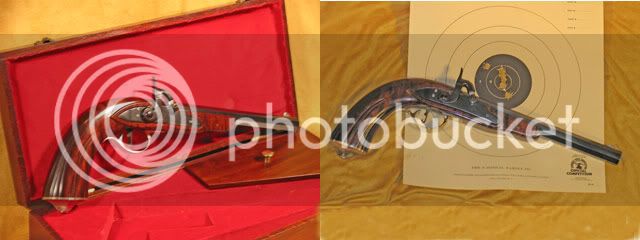Flinter987
40 Cal.
- Joined
- Jul 18, 2005
- Messages
- 145
- Reaction score
- 0
Hello,
I've been thinking about building a flintlock pistol from scratch. Looking for something circa 1820 - 1845 ish. I know flintlock was in the process of being replaced at this time, but I'm sure they were still around. Probably even styles from previous years wouldn't be a strech. Am wanting to make one pretty PC to that era of America, but have also toyed with other styles and ideas and am open to other ideas as well. Do you guys have some pictures of your builds? Would love to see them! I did a kit a couple years back, now would like to start from a block of wood and order the other parts I need. Any advice?
Thanks!
Flinter
I've been thinking about building a flintlock pistol from scratch. Looking for something circa 1820 - 1845 ish. I know flintlock was in the process of being replaced at this time, but I'm sure they were still around. Probably even styles from previous years wouldn't be a strech. Am wanting to make one pretty PC to that era of America, but have also toyed with other styles and ideas and am open to other ideas as well. Do you guys have some pictures of your builds? Would love to see them! I did a kit a couple years back, now would like to start from a block of wood and order the other parts I need. Any advice?
Thanks!
Flinter





